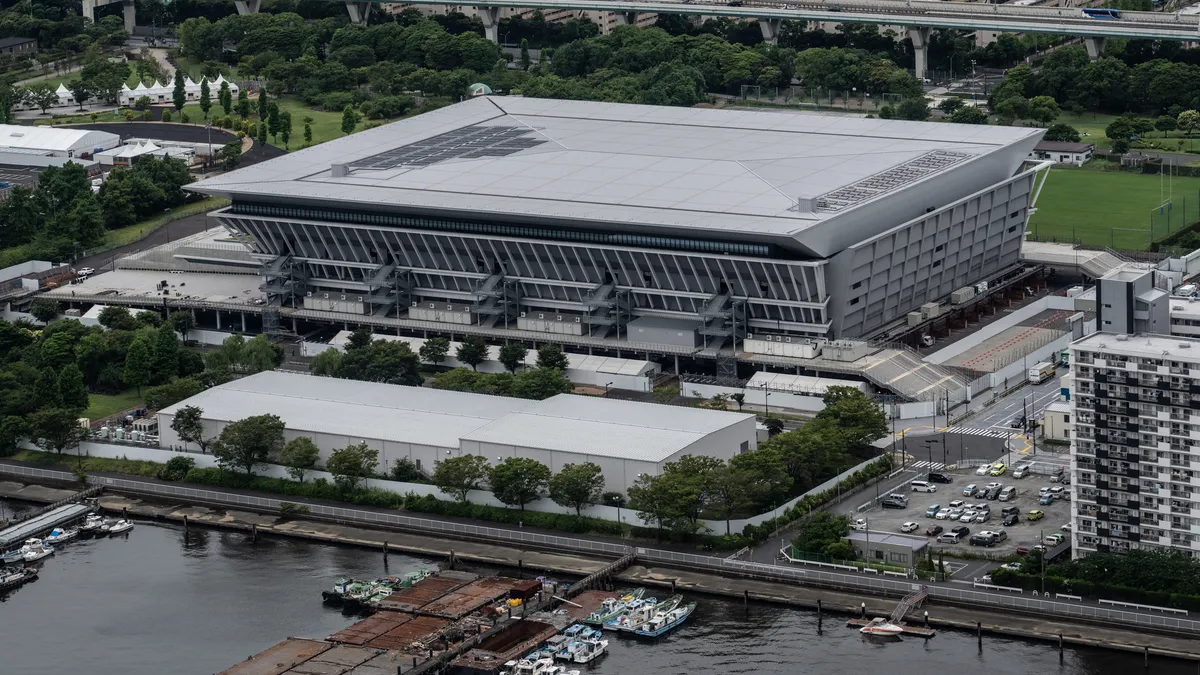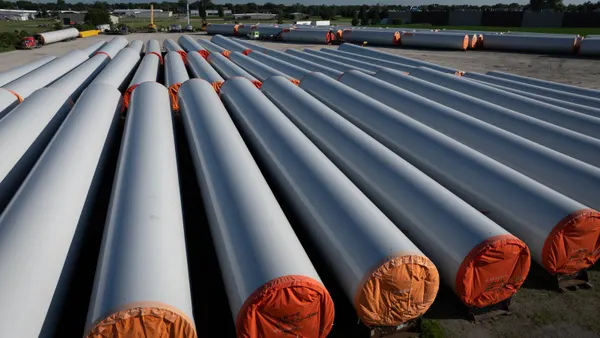Sports fans have gotten used to the sight of mostly empty stadiums.
Even as sports venues in the U.S. have begun to return to normalcy — the MLB All-Star Game July 13 had nearly 50,000 in-person spectators — a rising number of COVID-19 cases in Japan has forced the country to declare a state of emergency ahead of the rescheduled 2020 Olympics.
Although the competition will carry on, fans will not be able to attend the various events.
This summer, the games will take place across 43 venues: eight new permanent venues, 25 previously existing facilities and 10 temporary facilities, according to a press release from the Tokyo Olympic Committee.
Although they will be devoid of fans, here is a look at some of the largest venues Japan has constructed for this year's event.
Japan National Stadium
Japan's National Stadium was used as headquarters for the 1964 Olympics. Nearly 60 years later, the stadium has been demolished and rebuilt for this summer's games. National Stadium will be the site of the opening and closing ceremonies on July 23 and August 8, respectively. The 2.1 million-square-foot arena was completed in 2019, according to architect Kengo Kuma's website.
Multilayered eaves overlap to create the stadium's facade, paying homage to traditional Japanese architecture in a contemporary manner, Kuma's site says. The roof is made of a truss structure that combines steel beams and laminated lumber with a medium-cross section, designed to minimize deformation from extreme wind or earthquakes.
The venue will serve as the home of soccer games and track and field events. Although there will be no spectators at this year's games, the stadium has a capacity of 68,000, more than the Allegiant Stadium, home of the Las Vegas Raiders.
Tokyo Aquatics Center
Swimming is one of the most popular events at the Summer Olympics. The Tokyo Metropolitan government constructed the new, permanent Tokyo Aquatics Center, completing work in February of 2020, according to ForConstructionPros. The 705,000-square-foot building consists of five floors, a swimming pool, diving pool, sub pool, practice area and a seating capacity of up to 15,000. It will host swimming, diving and artistic swimming events during the Olympic and Paralympic games.
An innovative and unconventional design of the project led to a shortened timeline. The aquatic center's 7,000-ton roof was built on the ground and then lifted into place on four massive support pillars. The aquatic center also uses solar panels and a geothermal equipment system to heat the pool's water, significantly reducing the building's carbon footprint.
Musashino Forest Sport Plaza
Constructed in the western part of Tokyo, the Musashino Forest Sport Plaza is composed of two buildings — a main arena building and a sub arena building — totalling roughly 347,700 square-feet. The main surface area is the largest playing surface in the city, according to the venue's site, at about 52,700 square feet, or as big as four basketball courts. The sub-arena is about half the size, and it will be used mostly for indoor sports such as martial arts.
Although the facility, designed by architecture firm Nihon Sekkei, also has a pool, the Olympic games will be using the plaza for badminton and modern pentathlon (fencing), as well as wheelchair basketball during the Paralympic Games. The plaza can hold up to 10,000 spectators, but the Olympics’ site says it would have hosted 7,200.
Ariake Arena
Set to host volleyball competitions this summer, Ariake Arena in the northern part of Tokyo's Ariake district was completed in December 2019. The square-shaped building features a concave roof, with corners swooping upward, creating a tent-like look. The arena's roof was designed to reduce the interior space of the building, and therefore the area needed to cool and light it.
The venue has a potential capacity of 15,000, and, like Musashino Forest Sport Plaza, will also host wheelchair basketball. When the games are complete, the venue will remain as a sport and cultural center in the city, according to the Olympics' official site.
Oi Hockey Stadium
Construction of the Oi Hockey Stadium in Oi Ocean Pier Park concluded in the fall of 2019. Large, roofed bleachers stand directly next to a bright blue field, a stone's throw away from the waters of Tokyo Bay.
The outdoor arena will be used for field hockey events this summer, before it becomes a multipurpose outdoor facility after the Games for other events like futsal. It has a capacity of 15,000.















